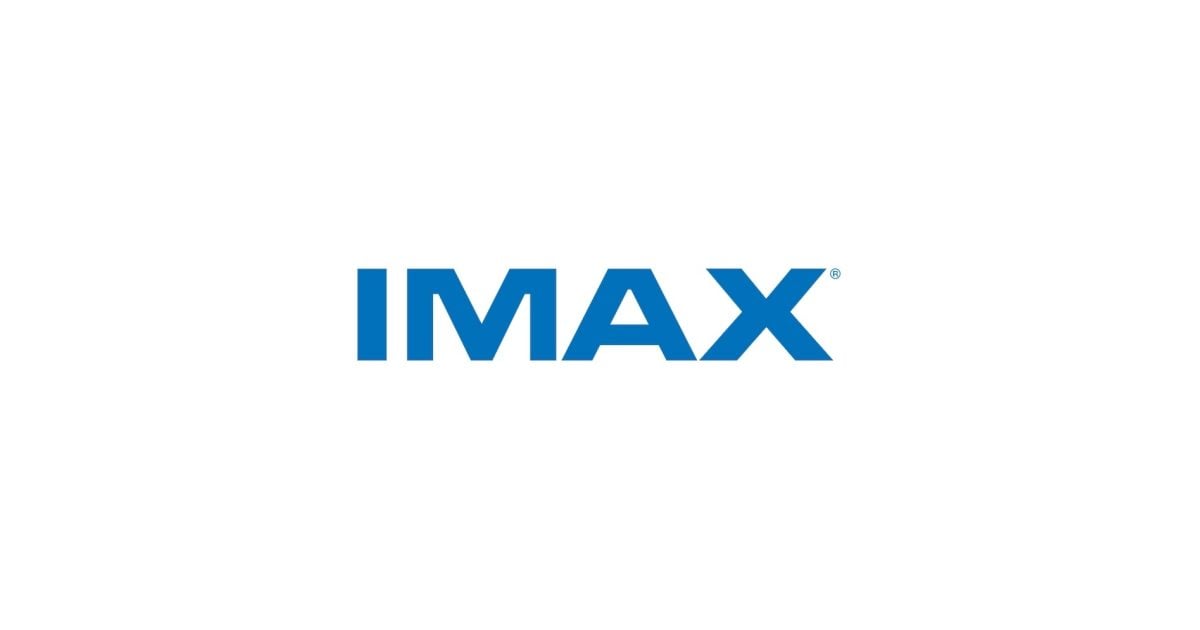Unlock the White House Watch newsletter for free
Your guide to what Trump’s second term means for Washington, business and the world
The US has offered Ukraine a 15-year security guarantee, but Kyiv wants a period three times as long to deter…

Unlock the White House Watch newsletter for free
Your guide to what Trump’s second term means for Washington, business and the world
The US has offered Ukraine a 15-year security guarantee, but Kyiv wants a period three times as long to deter…

Michalis Agathocleous, Ph.D., Assistant Professor in CRI and of Pediatrics, works with Ji Hyung Jun, Ph.D., Agathocleous Lab Senior Research Scientist at UT Southwestern.
DALLAS – Dec. 29, 2025 – Scientists at

Chest pain is oneof the most common chief complaints in clinical practice, accounting for a substantial number of emergency department visits and consuming considerable healthcare resources each year.1,2 Despite continuous…

Stay informed with free updates
Simply sign up to the Commodities myFT Digest — delivered directly to your inbox.
Silver prices tumbled on Monday, dragging down gold and other precious metals, as a record-breaking rally went abruptly into reverse.
Spot silver prices fell 9 per cent by late-afternoon trading to just under $72 a troy ounce, on track for their biggest one-day fall since the Covid pandemic, reversing the gains it had made during the thinly traded Boxing Day session.
The decline spilled over into gold, which slid more than 4 per cent to just above $4,300, dragging it down from the string of record highs it had reached in recent sessions.
Traders said the move reflected both profit-taking after a strong run, and a reaction to a notice issued by CME on December 26 indicating that margin requirements for a range of metal futures contracts, including silver and gold, are set to rise after the close on December 29. The higher margins raise the cost of holding leveraged positions, prompting some traders to pare back exposure.
Rushabh Amin, a multi-asset portfolio manager at Allspring Global Investments, said a combination of the higher margin requirements, thin liquidity, and other factors were “working against not just silver but bleeding into other precious metals”.
“This is not a blow-off top, per se, but a very strong consolidation,” he added, referring to a market term for a steep drop that follows a speculative surge.
The sell-off followed a record rally in the metal, as investors moved into haven assets as a refuge against geopolitical tensions and worries over the debasement of traditional currencies such as the US dollar. Spot prices breached $80 per ounce for the first time in early trading on Monday, from $50 as recently as November.
Analysts have seen signs of a speculative bubble in precious metals, as a rush of investor interest comes into asset classes with a constrained level of supply. The metals have also been boosted by US interest rate cuts that have sapped the relative attractiveness of dollar assets.
Ole Hansen, head of commodity strategy at Saxo Bank, said silver’s rally had become “parabolic”, leaving the market vulnerable as margin requirements, while rising, remained low by historical standards.
In a sign of growing attention on silver’s surge, Elon Musk wrote on X on December 26 that higher prices were “not good”, citing the metal’s widespread industrial use.
In a December 29 note, UBS said gold’s surge had been driven in part by “seasonal liquidity” and demand for real assets, warning that prices were trading at an “elevated premium” after the metal’s strongest year since 1979.

If there’s one thing we can all agree on, it’s that it’s been a weird year. And while that doesn’t really set 2025 apart from the last – well – decade, this year that trend spilt over into science too.
And it wasn’t just Katy Perry…

Imax Corp. and Cinemark Holdings Inc. are joining forces to bring new Imax 70mm film systems and Imax with Laser to 17 Cinemark locations in the United States and South America.
Under the terms of the agreement, Cinemark will add four new Imax…

3M to debut AI-powered assistant ‘Ask 3M’ and expanded 3M Digital Materials Hub at CES 2026
New generative tool and capabilities can accelerate customer-centric innovation, enable creation of previously nonexistent materials
ST. PAUL, Minn., Dec. 29, 2025 /PRNewswire/ — 3M (NYSE: MMM) today announced two digital innovations that will accelerate customer design workflows:
To speed the introduction of solutions for 3M customers, these tools leverage generative AI, advanced modeling, and simulation-ready data cards, empowering users to design and digitally validate materials before investing in physical prototypes.
“At 3M, we’re combining decades of material science with AI so engineers can make better decisions, faster,” said Holly Semerad, chief marketing officer for 3M’s Safety & Industrial Business Group. “Together, Ask 3M and the 3M Digital Materials Hub allow customers of varying scope and scale to move from design challenge to solution concept then digital selection and simulation in minutes. We can further accelerate the testing timeframe with small quantity purchase options for final and confident prototyping.”
At launch, Ask 3M will be piloted to engineers solving bonding design challenges utilizing tapes and adhesives—largely within 3M’s Safety & Industrial Business Group. Leveraging Amazon Web Services’ (AWS) secure and scalable AI capabilities, including Amazon Bedrock and AgentCore, Ask 3M and the 3M Digital Materials Hub demonstrate how agentic AI and advanced simulation can help 3M customers accelerate innovation cycles, reduce prototyping costs, and bring better products to market faster. Powered by AWS, the AI assistant guides users through substrates, environmental conditions, assembly methods, and performance targets to recommend suitable options, helping teams move from problem to product-fit more quickly.
The expanded 3M Digital Materials Hub, which launched in early 2025, will now include Optical Models, which represent 3M optical film performance for use in common simulation environments. Engineers in automotive, consumer electronics, and advanced manufacturing can quickly assess optical behaviors and material tradeoffs earlier in the process, reducing iterations and enabling faster decision-making. In a pilot with select customers, engineers reported that the tool enables seamless use of 3M materials into virtual simulations, accelerating prototyping and design.
In addition to these capabilities, the expanded platform also enables customers to request bespoke virtual materials—ones that solve their specific design challenges but don’t yet exist. It does this by leveraging 3M’s decades of material science and engineering expertise, which means the path to create these unique solutions is already in place and 3M can accelerate their development and delivery.
“With these platforms, 3M is redefining how engineers discover, evaluate, and simulate materials,” said Jason Langfield, 3M Digital Materials Hub project lead. “By drawing on 3M’s deep technological and application expertise, we can deliver secure, scalable access to mechanical models, optical models and virtual materials, while helping our customers reduce iterations, accelerate decisions, and bring better solutions to market faster.”
3M will showcase these solutions as part of its exhibition at CES 2026, located at Booth #8505 in the North Hall of the Las Vegas Convention Center. To learn more, or to schedule a meeting at CES, please email CES-3M@mmm.com.
For more information on 3M’s presence at CES, visit https://news.3m.com/CES.
About 3M
3M (NYSE: MMM) is focused on transforming industries around the world by applying science and creating innovative, customer-focused solutions. Our multi-disciplinary team is working to solve tough customer problems by leveraging diverse technology platforms, differentiated capabilities, global footprint, and operational excellence. Discover how 3M is shaping the future at 3M.com/news.
SOURCE 3M Company

China’s State Council has issued the Tariff Adjustment Plan for 2026, updating import and export tariffs on a range of goods and adding new tariff lines to the schedule. The 2026 plan focuses on the development of key industries, in particular those related to high-end technology, the green transition, and healthcare, while upholding the country’s commitments under existing free trade agreements.
The State Council Tariff Commission (SCTC) has released the updated tariff schedule for 2026, implementing new provisional tariff reductions and adjusting tariff lines in efforts to boost development in focus industries and support domestic provision of key services.
The 2026 tariff schedule includes tariff reductions on critical components and materials related to advanced and emerging technologies, renewable energy, and healthcare in particular. Meanwhile, most-favored nation (MFN) tariffs for certain imports previously granted tariff reductions have been restored in response to changing supply and demand in domestic industries.
The new tariff schedule will be implemented from January 1, 2026.
Overview of China’s 2026 Tariff Adjustment Plan
In 2026, China will implement provisional tariff reductions on 935 categories of goods, with new tariff adjustments made to “enhance the synergy between domestic and international markets and resources, and to expand the supply of high-quality goods”. The reductions particularly seek to benefit the development of innovative and emerging technologies – the “new quality productive forces” – and to improve the quality of life in China, in particular by lowering the cost of access to high-quality healthcare services.
Find Business Support
As such, many of the new tariff reductions target key components for emerging technologies, with tariffs reduced on products for use in advanced materials, aviation, lithium-ion batteries, renewable energy, and semiconductors, including CNC hydraulic air cushions, carbon fiber prepreg, recycled black powder, and unroasted pyrite.
Additionally, tariffs have been reduced on a range of healthcare products, including artificial blood vessels, formulated diagnostic kits for sexually transmitted diseases, and angular contact ball bearings for medical devices, among others.
Starting January 1, 2026, China will also restore MFN rates on certain products that previously enjoyed reduced tariffs, in order to enhance the productivity of domestic industries based on changes in domestic industrial development and supply and demand. These include restoring the MFN rates for imports of commodities such as micro motors, printing machines, and sulfuric acid.
Special tariff rates negotiated through FTAs will continue to be applied to certain imported goods originating from the 34 trading partners that are covered by China’s 24 FTAs and preferential trade arrangements.
Further tariff reductions will be implemented in accordance with the FTAs between China and the following countries:
Additionally, existing preferential tariff rates will continue to be applied to relevant imported goods, including rates implemented under:
The number of tariff lines will be increased from 8,960 in 2025 to 8,972 in 2026, with additions serving to enhance scientific and technological development and support the development of the circular economy and under-forest economy. The new additions include intelligent biomimetic robots (as well as other robots), bio-aviation kerosene, and under-forest ginseng.
In addition to the new tariff items, updated descriptions have been provided for wild ginseng, forest ginseng, biodiesels, and intelligent bionic robots.
The SCTC states that one of the intents of the tariff reductions is to “promote high-level technological self-reliance and the construction of a modern industrial system”, reflecting China’s ongoing efforts to bolster self-reliance in core technologies, such as semiconductors, as well as modernize and move its traditional industries up the value chain.
Find Business Support

The new tariff schedule therefore temporarily reduces tariffs on goods that are essential for the production of advanced materials, such as CNC hydraulic air cushions for presses, for which the tariff has been reduced from 12 percent to 6 percent, and irregularly shaped composite contact strips, for which the tariff will be lowered from 8 percent to 5 percent. Additionally, duties on carbon fiber prepregs for use in aircraft have been lowered from 17 to just 5 percent, in an effort to enhance the competitiveness of China’s aircraft construction industry.
Tariff reductions also extend to specialised equipment used in semiconductor manufacturing, including constant temperature and humidity control devices for coating and developing machines. By lowering import costs for such equipment, the authorities aim to ease constraints in upstream manufacturing processes while domestic capabilities continue to be developed.
The tariff reductions thereby seek to enhance the development of key industries in which China is seeking to bolster its competitiveness and self-reliance, notably aircraft building and semiconductors, two strategically important areas in which it is still reliant on imports.
The second target of the tariff reductions according to the SCTC is to support the “comprehensive green transformation of economic and social development”. As such, tariffs on resource-based commodities that are essential for the production of batteries, namely recycled black powder for use in lithium-ion batteries (for which the tariff has been reduced from 6.5 percent to 3 percent) and unroasted pyrite (further reduced from 1 percent in 2025 to 0 percent in 2026). Tariff reductions for a range of other battery materials and components remain in place from previous years.
China is massively expanding its renewable energy capacity and output, with plans to continue this expansion in the years to come under its dual carbon targets and its carbon reduction commitments set out in its Nationally Determined Contributions (NDCs) announced in September 2025. In its NDCs, China has targeted to increase the installed capacity of wind and solar power generation to six times its 2020 levels by 2035, while striving to reach 3,600 GW. Additionally, it aims to make electric vehicles the “main driver” of new vehicle purchases.
Meeting these targets will require sustained, large-scale investment across the clean-energy value chain, particularly in battery manufacturing and energy storage. By lowering tariffs on key upstream inputs, China is seeking to reduce production costs, mitigate supply bottlenecks, and support the domestic scaling of strategic green industries, while also maintaining access to global supply chains at a time of heightened international competition in clean-tech manufacturing.
Continuing one of the priorities set out in the 2025 tariff adjustment schedule, China will further reduce tariffs on selected medical equipment and healthcare-related materials in an effort to improve healthcare standards and overall quality of life. The latest reductions focus on both advanced medical devices and diagnostic inputs, reflecting an emphasis on improving access to high-quality treatment and disease detection.
Key tariff cuts include artificial blood vessels, for which tariffs have been reduced from 4 percent to 2 percent, as well as pre-prepared diagnostic reagent kits used to detect hepatitis A, B and C viruses, HIV, and Treponema pallidum (syphilis), which will see tariffs fall from 3 percent to zero. In addition, tariffs on specialised angular contact ball bearings for medical equipment have been halved from 8 percent to 4 percent.
These reductions signal a continued policy focus on lowering the cost of advanced medical technologies and critical diagnostics, supporting both healthcare providers and patients. They also underline China’s broader objective of upgrading its healthcare system through improved access to high-end imported components and materials, while complementing domestic efforts to move up the medical manufacturing value chain.
Beyond adjustments to existing tariff rates, the additions of new tariff lines also closely align with China’s evolving industrial and development priorities, particularly in advanced technologies, the circular economy, and rural economic revitalization.
Find Business Support

For instance, the addition of wild and under-forest ginseng underscores a policy priority that has been increasingly emphasized as part of China’s broader rural revitalization strategy. Developing the under-forest economy, which encompasses economic activities conducted beneath forest canopies, such as the cultivation of medicinal herbs and specialty agricultural products, was explicitly highlighted in the recommendations for the 15th Five-Year Plan. The new additions therefore reflect efforts to standardise classifications, improve regulatory oversight, and support the scaling and commercialization of high-value forest-based products (under-forest ginseng will now be subject to a 20 percent MFN tariff). This, in turn, aligns with broader objectives to raise rural incomes, improve land-use efficiency, and promote more sustainable models of agricultural development.
The inclusion of bio-aviation kerosene, as well as other aviation kerosene, suggests an effort to better differentiate fuels within the tariff framework and to accommodate the development and use of alternative and lower-carbon aviation fuels. This reflects China’s longer-term ambitions to reduce emissions in hard-to-abate sectors such as aviation, while supporting the development of more resource-efficient and sustainable energy pathways.
Finally, the addition of tariff lines for intelligent biomimetic robots underscores China’s ambitions in emerging and advanced technologies. Robotics has been identified as a key component of China’s push to develop new quality productive forces, with applications spanning manufacturing, healthcare, logistics, and environmental monitoring. By explicitly recognizing intelligent biomimetic robots within the tariff schedule and refining the definitions for intelligent bionic robots, China is signalling a desire to better accommodate technological advances and support domestic innovation and industrial upgrading.
About Us
China Briefing is one of five regional Asia Briefing publications. It is supported by Dezan Shira & Associates, a pan-Asia, multi-disciplinary professional services firm that assists foreign investors throughout Asia, including through offices in Beijing, Tianjin, Dalian, Qingdao, Shanghai, Hangzhou, Ningbo, Suzhou, Guangzhou, Haikou, Zhongshan, Shenzhen, and Hong Kong in China. Dezan Shira & Associates also maintains offices or has alliance partners assisting foreign investors in Vietnam, Indonesia, Singapore, India, Malaysia, Mongolia, Dubai (UAE), Japan, South Korea, Nepal, The Philippines, Sri Lanka, Thailand, Italy, Germany, Bangladesh, Australia, United States, and United Kingdom and Ireland.
For a complimentary subscription to China Briefing’s content products, please click here. For support with establishing a business in China or for assistance in analyzing and entering markets, please contact the firm at china@dezshira.com or visit our website at www.dezshira.com.

The enduring puzzle of what happens to information that falls into a black hole continues to challenge fundamental physics, and recent work offers compelling new insights into this long-standing problem. Badis Ydri from Badji Mokhtar…